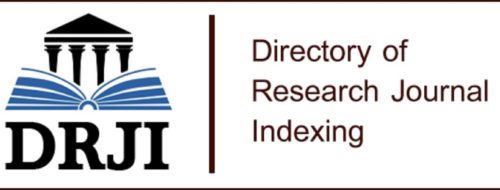Öz
Tedarik zinciri
risk yönetimi (TZRY) uzun vadede kârlı, rekabetçi ve sürdürülebilir bir tedarik
zinciri (TZ) için son derece önemlidir. Tarihsel süreç içerisinde küresel çapta
etki gösteren pek çok yıkıcı risk olayı meydana gelmiştir. Bu risk olayları
sonucu meydana gelen zararlar TZ’lerinin riskler karşısında ne kadar kırılgan
olduğunu ortaya koymuştur.
Tarihi seyri
içerisinde gerçekleşen önemli TZ risk olaylarında da görüleceği üzere
başlangıçta önemsenmeyen küçük risk olayları bile makro seviyede milyar
dolarları bulan maliyetlere ve uzun süreli TZ kesintilerine neden
olabilmektedir. Yine TZ risklerinin çok boyutlu ve kompleks olması nedeniyle
bir riskin TZ üzerindeki toplam etkisini belirlemek çok zordur. Riskli olay
sadece TZ’nin bir bölümünü etkilemiş görünse de kısa sürede bu etkinin tüm
paydaşlar üzerindeki etkisi hissedilebilmektedir.
Bu çalışmada
TZRY öneminin ortaya konulabilmesi için önemli TZ risk olaylarından başarılı ve
başarısız örnekler tarihi seyri içerisinde sunularak TZRY’ne olan ihtiyacın
resmedilmesi amaçlanmıştır.
Anahtar Kelimeler
Tedarik Zinciri Tedarik Zinciri Yönetimi Tedarik Zinciri Risk Yönetimi
Kaynakça
- Allianz Risk Barometer; (2015, 5 October), “Top Business Risks 2015”, Internet Address: http://www.agcs.allianz.com/assets/PDFs/Reports/ Allianz-Risk-Barometer-2015_ EN.pdf, Date of Access:10.07.2017.
- BASOLE, Rahul C. and Marcus A. BELLAMY; (2014), “Visual Analysis of Supply Network Risks: Insights from The Electronics Industry”, Decision Support Systems, 67, pp.109-120.
- BRADLEY, James R.; (2014), “An Improved Method for Managing Catastrophic Supply Chain Disruptions”, Business Horizons, 57(4), pp.483-495.
- BRUNING, Marie; J.Henning BUCHHOLZ and Julia BENDUL; (2014), “Transferability of Self-Healing Principles to The Recovery of Supply Network Disruptions–The Case of Renesas Electronics”, Procedia CIRP, 19, pp.14-20.
- CARBAUGH, Robert J.; (2013), Contemporary Economics: An Applications Approach, Seventh Edition, London: ME Sharpe.
- CARTER, David A. and Betty J. SIMKINS; (2004), “The Market’s Reaction to Unexpected, Catastrophic Events: The Case of Airline Stock Returns and The September 11th Attacks”, The Quarterly Review of Economics and Finance, 44(4), pp.539-558.
- CAVINATO, Joseph L.; (2004), “Supply Chain Logistics Risks: From The Back Room To The Board Room”, International Journal of Physical Distribution ve Logistics Management, 34, pp.383-387.
- CHATZIDIMITRIOU, Kyriakos C.; Andreas L. SYMEONIDIS; Ioannis KONTOGOUNIS and Pericles A. MITKAS; (2008), “Agent Mertacor: A Robust Design for Dealing with Uncertainty and Variation in SCM Environments”, Expert Systems with Applications, 35(3), pp.591-603.
- CNNMoney.com; (2008, 20 March), “China steel association denies boycott of Australian spot iron ore imports”, Internet Address: http://money.cnn.com/2017/05/12/news/economy/china-steel-europe-dumping/index.html, Date of Access:01.07.2017.
- Cranfield University; (2002), “Supply chain Vulnerability”, Executive Report, Internet Address: http://www.som.cranfield.ac.uk/som/research/centres/ lscm/downloads/Vulnerability_report.pdf, Date of Access:05.08.2017.
- DEMİRDÖĞEN, Osman ve Orhan KÜÇÜK; (2011), Üretim İşlemler Yönetimi, İkinci Baskı, Ankara: Detay Yayıncılık.
- DEMİRDÖĞEN, Osman; Yasemin TATLI ve Selçuk KORUCUK; (2015), “Türkiye’de ve Dünyada Afet Lojistiği Uygulamalarının Genel Durumu Üzerine Bir Literatür Araştırması”, IV. Ulusal Lojistik ve Tedarik Zinciri Kongresi, 21-23 Mayıs 2015, Gümüşhane, ss.423-429, İnternet Adresi: http://ultzk2015.gumushane.edu.tr/index/, Erişim Tarihi: 10.09.2017.
- DEMİRKOL, İsa; Mustafa Cahit ÜNGAN ve Murat AYANOĞLU; (2015), “Tedarik Zinciri Risklerinin İşletme Performansı Üzerindeki Etkisi: Otomotiv Sektöründe Bir Uygulama”, İşletme Bilimi Dergisi, 3(1), ss.20-37.
- Dünya Ekonomik Forumu; (2012), “New Models for Addressing Supply Chain and Transport Risk”, Internet Address: http://www3.weforum.org/ docs/WEF_SCT_RRN_NewModelsAddressingSupplyChainTransportRisk_IndustryAgenda_2012.pdf, Date of Access:02.08.2017.
- Dünya Ekonomik Forumu; (2015), “Global Risks 2015”, Internet Address: http://www3.weforum.org/docs/WEF_Global_Risks_2015_Report15.pdf, Date of Access: 05.09.2017.
- ERDAL, Hamit; (2017). “Tedarik Zinciri Ağında Riskin Yönetimi: Tedarik Yönlü Bir Karar Destek Sistemi Tasarımı”, Yayımlanmamış Doktora Tezi, Erzurum: Atatürk Üniversitesi Sosyal Bilimleri Enstitüsü.
- GHADGE, Abheejit; Samir DANI and Roy KALAWSKY; (2012), “Supply Chain Risk Management: Present and Future Scope”, The International Journal of Logistics Management, 23(3), pp.313-339.
- GOVAN, Fiona; (2011, 31 May), “Spain Calls for Compensation After Being ‘Wrongly’ Blamed for E.Coli Cucumbers” Internet Address: http://www.telegraph.co.uk/news/worldnews/europe/ spain/8548296/Spain-calls-for-compensation-after-being-wrongly-blamed-for-E.coli-cucumbers.html, Date of Access: 06.08.2017.
- GÜVEN, Barış; (2010), “Arz Zinciri Risklerinin Yönetiminde Enformasyon Teknolojilerinin Kullanımı”, Yayımlanmamış Doktora Tezi, İstanbul: Bahçeşehir Üniversitesi Fen Bilimleri Enstitüsü.
- HANDFIELD, Robert B.; Jennifer LACKHURST; Debra ELKINS and Christopher W.; (2007) “A Framework for Reducing The Impact of Disruptions to The Supply Chain: Observations from Multiple Executives”, in Robert B. HANDFIELD and Kevin MCCORMACK (Ed.), Supply Chain Risk Management: Minimizing Disruption in Global Sourcing, Boca Raton, FL: Taylor and Francis, pp.29-49.
- HECKMANN, Iris; Tina COMES and Stefan NICKEL; (2015), “A Critical Review on Supply Chain Risk–Definition, Measure and Modeling”, Omega, 52, pp.119-132.
- HENDRICKS, Kevin B. and Vinod R. SINGHAL; (2003), “The Effect of Supply Chain Glitches on Shareholder Wealth”, Journal of Operations Management, 21(5), pp.501-522.
- HENDRICKS, Kevin B. and Vinod R. SINGHAL; (2005), “An Empirical Analysis of The Effect of Supply Chain Disruptions on Long-run Stock Price Performance and Equity Risk of The Firm”, Production and Operations Management, 14(1), pp.35-52.
- International Standards Organisation; (2009), “Risk Management Vocabulary”, Internet Address: https://www.iso.org/ obp/ui/#iso:std:iso: guide:73:ed-1:v1:en, Date of Access: 05.06.2017.
- KABA, Nilay; (2013), Lojistik İşletmesinde Risk Odaklı Bir Yönetim, Yayımlanmamış Yüksek Lisans Tezi, İstanbul: Kadir Has Üniversitesi Sosyal Bilimler Enstitüsü.
- KARA, Merve Er ve Seniye Ümit FIRAT; (2015), “Tedarik Zinciri Risk Yönetiminin Gelişmesini Tetikleyen Risk Olayları Üzerine Bir İnceleme”, IV. Ulusal Lojistik ve Tedarik Zinciri Kongresi, 21-23 Mayıs 2015, Gümüşhane, ss.326-334, İnternet Adresi: http://ultzk2015.gumushane.edu.tr/index/, Erişim Tarihi: 10.09.2017.
- KAYA, Murat and Özalp ÖZER; (2012), “Pricing in Business-to-Business Contracts: Sharing Risk, Profit, and Information”, Özalp ÖZER and Robert PHILLIPS (Ed.), The Oxford Handbook of Pricing Management, pp. 738-783, Internet Address: http://ssrn.com/abstract= 1963666, Date of Access: 08.07.2017.
- KIRILMAZ, Oğuzhan; (2014), Tedarik Zinciri Şebekesinde Risk Yönetimi: Otomotiv Endüstrisinde Bir Uygulama, Yayımlanmamış Doktora Tezi, Ankara: Gazi Üniversitesi Fen Bilimleri Enstitüsü.
- KOCH, Christopher; (2004), “Nike Rebounds: How (and Why) Nike Recovered from Its Supply Chain Diaster”, CIO Austrialia’s Magazine for Executives, Internet Address: http://www.cio.com.au/article/166633/ nike_rebounds/, Date of Access: 02.06.2017.
- LAVASTRE, Olivier; Angappa GUNASEKARAN and Alain SPALANZANI; (2012), “Supply Chain Risk Management in French Companies”, Decision Support Systems, 52(4), pp.828-838.
- LEE, Hau L.; (2004), “The Triple-A Supply Chain”, Harvard Business Review, 82(10), pp.102-113.
- LIU, Zugang and Jose M. CRUZ; (2012), “Supply Chain Networks with Corporate Financial Risks and Trade Credits Under Economic Uncertainty”, International Journal of Production Economics, 137(1), pp.55-67.
- MUELLER, John and Mark G. STEWART; (2011), “Balancing The Risks, Benefits, and Costs of Homeland Security”, Homeland Security Affairs, 7(1), pp.1-26.
- NORRMAN, Andreas and Ulf JANSSON; (2004), “Ericsson’s Proactive Supply Chain Risk Management Approach After A Serious Sub-supplier Accident”, International Journal of Physical Distribution and Logistics Management, 34(5), pp.434-456.
- POIRIER, C.C. and F.J. QUINN; (2004), “How Are We Doing: A Survey of Supply Chain Progress”, Supply Chain Management Review, 8 (8), pp.24-31.
- ROTHSTEIN, Ritchard; (1997), “Union Strength in The United States: Lessons from The UPS Strike”, International Labour Review, 136(4), pp.469-491.
- ROWAT, Christine; (2003), “Supply-chain Risk and Vulnerability Workshop”, Logistics and Transports Focus, 5(2), pp.68-69.
- SHEFFI, Yossi and James B. RICE; (2005), “A Supply Chain View of The Resilient Enterprise”, MIT Sloan Management Review, 47(1), p.41.
- SINGHAL, Vinod R.; (2008), “Managing Supply Chain Risks”, Internet Address: http://www.mhi.org/media/ news/7777, Date of access: 04.06.2017.
- SODHI, ManMohan S. and Christopher S. TANG; (2012), “Managing Supply Chain Risk”, Springer Science ve Business Media, 172, pp. 1-20.
- SOUTER, G.; (2000), “Risks from Supply Chain Also Demand Attention”, Business Insurance, 34(20), pp.26-28. Swiss Re; (2016), “Natural Catastrophes and Man-made Disasters in 2015”, Internet Address: http://www.swissre.com/sigma/?year=2016#anchor0, Date of Access: 05.09.2017.
- TAKATA, Shozo and Masato YAMANAKA; (2013), “BOM Based Supply Chain Risk Management”, CIRP Annals-Manufacturing Technology, 62(1), pp.479-482.
- TANG, Christopher S.; (2006), “Robust Strategies for Mitigating Supply Chain Disruptions”, International Journal of Logistics: Research and Applications, 9(1), pp.33-45.
- TANG, Ou and S. Nurmaya MUSA; (2011), “Identifying Risk Issues and Research Advancements in Supply Chain Risk Management”, International Journal of Production Economics, 133(1), pp.25-34.
- THUN, Jörn-Henrik and Daniel HOENIG; (2011), “An Empirical Analysis of Supply Chain Risk Management in The German Automotive Industry”, International Journal of Production Economics, 131(1), pp.242-249.
- TRKMAN, Peter and Kevin MCCORMACK; (2009), “Supply Chain Risk in Turbulent Environments-A Conceptual Model for Managing Supply Chain Network Risk”, International Journal of Production Economics, 119(2), pp.247-258.
- VESA, Jarkko; (2005), “Mobile Services in The Networked Economy”, IGI Global, 99, pp.118-150.
- VILKO, Jayri P. and Jukka M. HALLIKAS; (2012), “Risk Assessment in Multimodal Supply Chains”, International Journal of Production Economics, 140(2), pp.586-595.
- WATERS, Daniel; (2011), Supply Chain Risk Management: Vulnerability and Resilience in Logistics, Kogan Page Publishers.
- WILLIAMS, Kathy; (2008), “Supply Chain Risks: Are You Prepared?”, Strategic Finance, 89 (11), pp.23-61.
- ZSIDISIN, George A. and Bob RITCHIE; (2009), “Supply Chain Risk Management–Developments, Issues and Challenges”, in ZSIDISIN, George A. and Bob RITCHIE, B (Ed.), Supply Chain Risk, US: Springer, pp. 1-12.
Öz
Supply chain
risk management (SCRM) is crucial for a long-term profitable, competitive and
sustainable supply chain (SC). Many destructive risk incidents that have
affected the global scale have come into play in the historical process. The
losses, occured due to these risk incidents, revealed how the SCs are fragile
against the risks.
As can be seen
in the major SC risk incidents that occur during the historical process, even
the small risk incidents that are initially ignored can cause billions of
dollars in macro-level costs and long-term SC interruptions. Again, because the
risks of SC are multidimensional and complex, it is too difficult to determine
the total effect of a risky incident upon a SC. Although the risky incident
seems to have affected only a part of the SC, it may soon feel the effect on
all partners.
In this study,
successful and unsuccessful examples of important SC risk incidents have been
presented in the historical process so that the need for the SCRM would be
portrayed.
Anahtar Kelimeler
Supply Chain Supply Chain Management Supply Chain Risk Management
Kaynakça
- Allianz Risk Barometer; (2015, 5 October), “Top Business Risks 2015”, Internet Address: http://www.agcs.allianz.com/assets/PDFs/Reports/ Allianz-Risk-Barometer-2015_ EN.pdf, Date of Access:10.07.2017.
- BASOLE, Rahul C. and Marcus A. BELLAMY; (2014), “Visual Analysis of Supply Network Risks: Insights from The Electronics Industry”, Decision Support Systems, 67, pp.109-120.
- BRADLEY, James R.; (2014), “An Improved Method for Managing Catastrophic Supply Chain Disruptions”, Business Horizons, 57(4), pp.483-495.
- BRUNING, Marie; J.Henning BUCHHOLZ and Julia BENDUL; (2014), “Transferability of Self-Healing Principles to The Recovery of Supply Network Disruptions–The Case of Renesas Electronics”, Procedia CIRP, 19, pp.14-20.
- CARBAUGH, Robert J.; (2013), Contemporary Economics: An Applications Approach, Seventh Edition, London: ME Sharpe.
- CARTER, David A. and Betty J. SIMKINS; (2004), “The Market’s Reaction to Unexpected, Catastrophic Events: The Case of Airline Stock Returns and The September 11th Attacks”, The Quarterly Review of Economics and Finance, 44(4), pp.539-558.
- CAVINATO, Joseph L.; (2004), “Supply Chain Logistics Risks: From The Back Room To The Board Room”, International Journal of Physical Distribution ve Logistics Management, 34, pp.383-387.
- CHATZIDIMITRIOU, Kyriakos C.; Andreas L. SYMEONIDIS; Ioannis KONTOGOUNIS and Pericles A. MITKAS; (2008), “Agent Mertacor: A Robust Design for Dealing with Uncertainty and Variation in SCM Environments”, Expert Systems with Applications, 35(3), pp.591-603.
- CNNMoney.com; (2008, 20 March), “China steel association denies boycott of Australian spot iron ore imports”, Internet Address: http://money.cnn.com/2017/05/12/news/economy/china-steel-europe-dumping/index.html, Date of Access:01.07.2017.
- Cranfield University; (2002), “Supply chain Vulnerability”, Executive Report, Internet Address: http://www.som.cranfield.ac.uk/som/research/centres/ lscm/downloads/Vulnerability_report.pdf, Date of Access:05.08.2017.
- DEMİRDÖĞEN, Osman ve Orhan KÜÇÜK; (2011), Üretim İşlemler Yönetimi, İkinci Baskı, Ankara: Detay Yayıncılık.
- DEMİRDÖĞEN, Osman; Yasemin TATLI ve Selçuk KORUCUK; (2015), “Türkiye’de ve Dünyada Afet Lojistiği Uygulamalarının Genel Durumu Üzerine Bir Literatür Araştırması”, IV. Ulusal Lojistik ve Tedarik Zinciri Kongresi, 21-23 Mayıs 2015, Gümüşhane, ss.423-429, İnternet Adresi: http://ultzk2015.gumushane.edu.tr/index/, Erişim Tarihi: 10.09.2017.
- DEMİRKOL, İsa; Mustafa Cahit ÜNGAN ve Murat AYANOĞLU; (2015), “Tedarik Zinciri Risklerinin İşletme Performansı Üzerindeki Etkisi: Otomotiv Sektöründe Bir Uygulama”, İşletme Bilimi Dergisi, 3(1), ss.20-37.
- Dünya Ekonomik Forumu; (2012), “New Models for Addressing Supply Chain and Transport Risk”, Internet Address: http://www3.weforum.org/ docs/WEF_SCT_RRN_NewModelsAddressingSupplyChainTransportRisk_IndustryAgenda_2012.pdf, Date of Access:02.08.2017.
- Dünya Ekonomik Forumu; (2015), “Global Risks 2015”, Internet Address: http://www3.weforum.org/docs/WEF_Global_Risks_2015_Report15.pdf, Date of Access: 05.09.2017.
- ERDAL, Hamit; (2017). “Tedarik Zinciri Ağında Riskin Yönetimi: Tedarik Yönlü Bir Karar Destek Sistemi Tasarımı”, Yayımlanmamış Doktora Tezi, Erzurum: Atatürk Üniversitesi Sosyal Bilimleri Enstitüsü.
- GHADGE, Abheejit; Samir DANI and Roy KALAWSKY; (2012), “Supply Chain Risk Management: Present and Future Scope”, The International Journal of Logistics Management, 23(3), pp.313-339.
- GOVAN, Fiona; (2011, 31 May), “Spain Calls for Compensation After Being ‘Wrongly’ Blamed for E.Coli Cucumbers” Internet Address: http://www.telegraph.co.uk/news/worldnews/europe/ spain/8548296/Spain-calls-for-compensation-after-being-wrongly-blamed-for-E.coli-cucumbers.html, Date of Access: 06.08.2017.
- GÜVEN, Barış; (2010), “Arz Zinciri Risklerinin Yönetiminde Enformasyon Teknolojilerinin Kullanımı”, Yayımlanmamış Doktora Tezi, İstanbul: Bahçeşehir Üniversitesi Fen Bilimleri Enstitüsü.
- HANDFIELD, Robert B.; Jennifer LACKHURST; Debra ELKINS and Christopher W.; (2007) “A Framework for Reducing The Impact of Disruptions to The Supply Chain: Observations from Multiple Executives”, in Robert B. HANDFIELD and Kevin MCCORMACK (Ed.), Supply Chain Risk Management: Minimizing Disruption in Global Sourcing, Boca Raton, FL: Taylor and Francis, pp.29-49.
- HECKMANN, Iris; Tina COMES and Stefan NICKEL; (2015), “A Critical Review on Supply Chain Risk–Definition, Measure and Modeling”, Omega, 52, pp.119-132.
- HENDRICKS, Kevin B. and Vinod R. SINGHAL; (2003), “The Effect of Supply Chain Glitches on Shareholder Wealth”, Journal of Operations Management, 21(5), pp.501-522.
- HENDRICKS, Kevin B. and Vinod R. SINGHAL; (2005), “An Empirical Analysis of The Effect of Supply Chain Disruptions on Long-run Stock Price Performance and Equity Risk of The Firm”, Production and Operations Management, 14(1), pp.35-52.
- International Standards Organisation; (2009), “Risk Management Vocabulary”, Internet Address: https://www.iso.org/ obp/ui/#iso:std:iso: guide:73:ed-1:v1:en, Date of Access: 05.06.2017.
- KABA, Nilay; (2013), Lojistik İşletmesinde Risk Odaklı Bir Yönetim, Yayımlanmamış Yüksek Lisans Tezi, İstanbul: Kadir Has Üniversitesi Sosyal Bilimler Enstitüsü.
- KARA, Merve Er ve Seniye Ümit FIRAT; (2015), “Tedarik Zinciri Risk Yönetiminin Gelişmesini Tetikleyen Risk Olayları Üzerine Bir İnceleme”, IV. Ulusal Lojistik ve Tedarik Zinciri Kongresi, 21-23 Mayıs 2015, Gümüşhane, ss.326-334, İnternet Adresi: http://ultzk2015.gumushane.edu.tr/index/, Erişim Tarihi: 10.09.2017.
- KAYA, Murat and Özalp ÖZER; (2012), “Pricing in Business-to-Business Contracts: Sharing Risk, Profit, and Information”, Özalp ÖZER and Robert PHILLIPS (Ed.), The Oxford Handbook of Pricing Management, pp. 738-783, Internet Address: http://ssrn.com/abstract= 1963666, Date of Access: 08.07.2017.
- KIRILMAZ, Oğuzhan; (2014), Tedarik Zinciri Şebekesinde Risk Yönetimi: Otomotiv Endüstrisinde Bir Uygulama, Yayımlanmamış Doktora Tezi, Ankara: Gazi Üniversitesi Fen Bilimleri Enstitüsü.
- KOCH, Christopher; (2004), “Nike Rebounds: How (and Why) Nike Recovered from Its Supply Chain Diaster”, CIO Austrialia’s Magazine for Executives, Internet Address: http://www.cio.com.au/article/166633/ nike_rebounds/, Date of Access: 02.06.2017.
- LAVASTRE, Olivier; Angappa GUNASEKARAN and Alain SPALANZANI; (2012), “Supply Chain Risk Management in French Companies”, Decision Support Systems, 52(4), pp.828-838.
- LEE, Hau L.; (2004), “The Triple-A Supply Chain”, Harvard Business Review, 82(10), pp.102-113.
- LIU, Zugang and Jose M. CRUZ; (2012), “Supply Chain Networks with Corporate Financial Risks and Trade Credits Under Economic Uncertainty”, International Journal of Production Economics, 137(1), pp.55-67.
- MUELLER, John and Mark G. STEWART; (2011), “Balancing The Risks, Benefits, and Costs of Homeland Security”, Homeland Security Affairs, 7(1), pp.1-26.
- NORRMAN, Andreas and Ulf JANSSON; (2004), “Ericsson’s Proactive Supply Chain Risk Management Approach After A Serious Sub-supplier Accident”, International Journal of Physical Distribution and Logistics Management, 34(5), pp.434-456.
- POIRIER, C.C. and F.J. QUINN; (2004), “How Are We Doing: A Survey of Supply Chain Progress”, Supply Chain Management Review, 8 (8), pp.24-31.
- ROTHSTEIN, Ritchard; (1997), “Union Strength in The United States: Lessons from The UPS Strike”, International Labour Review, 136(4), pp.469-491.
- ROWAT, Christine; (2003), “Supply-chain Risk and Vulnerability Workshop”, Logistics and Transports Focus, 5(2), pp.68-69.
- SHEFFI, Yossi and James B. RICE; (2005), “A Supply Chain View of The Resilient Enterprise”, MIT Sloan Management Review, 47(1), p.41.
- SINGHAL, Vinod R.; (2008), “Managing Supply Chain Risks”, Internet Address: http://www.mhi.org/media/ news/7777, Date of access: 04.06.2017.
- SODHI, ManMohan S. and Christopher S. TANG; (2012), “Managing Supply Chain Risk”, Springer Science ve Business Media, 172, pp. 1-20.
- SOUTER, G.; (2000), “Risks from Supply Chain Also Demand Attention”, Business Insurance, 34(20), pp.26-28. Swiss Re; (2016), “Natural Catastrophes and Man-made Disasters in 2015”, Internet Address: http://www.swissre.com/sigma/?year=2016#anchor0, Date of Access: 05.09.2017.
- TAKATA, Shozo and Masato YAMANAKA; (2013), “BOM Based Supply Chain Risk Management”, CIRP Annals-Manufacturing Technology, 62(1), pp.479-482.
- TANG, Christopher S.; (2006), “Robust Strategies for Mitigating Supply Chain Disruptions”, International Journal of Logistics: Research and Applications, 9(1), pp.33-45.
- TANG, Ou and S. Nurmaya MUSA; (2011), “Identifying Risk Issues and Research Advancements in Supply Chain Risk Management”, International Journal of Production Economics, 133(1), pp.25-34.
- THUN, Jörn-Henrik and Daniel HOENIG; (2011), “An Empirical Analysis of Supply Chain Risk Management in The German Automotive Industry”, International Journal of Production Economics, 131(1), pp.242-249.
- TRKMAN, Peter and Kevin MCCORMACK; (2009), “Supply Chain Risk in Turbulent Environments-A Conceptual Model for Managing Supply Chain Network Risk”, International Journal of Production Economics, 119(2), pp.247-258.
- VESA, Jarkko; (2005), “Mobile Services in The Networked Economy”, IGI Global, 99, pp.118-150.
- VILKO, Jayri P. and Jukka M. HALLIKAS; (2012), “Risk Assessment in Multimodal Supply Chains”, International Journal of Production Economics, 140(2), pp.586-595.
- WATERS, Daniel; (2011), Supply Chain Risk Management: Vulnerability and Resilience in Logistics, Kogan Page Publishers.
- WILLIAMS, Kathy; (2008), “Supply Chain Risks: Are You Prepared?”, Strategic Finance, 89 (11), pp.23-61.
- ZSIDISIN, George A. and Bob RITCHIE; (2009), “Supply Chain Risk Management–Developments, Issues and Challenges”, in ZSIDISIN, George A. and Bob RITCHIE, B (Ed.), Supply Chain Risk, US: Springer, pp. 1-12.
Ayrıntılar
| Bölüm | Makaleler |
|---|---|
| Yazarlar | |
| Yayımlanma Tarihi | 19 Aralık 2017 |
| Kabul Tarihi | 1 Ağustos 2017 |
| Yayımlandığı Sayı | Yıl 2017 Sayı: 50 |
Cited By
Belirsizlik ve Tedarik Zinciri Riski: Risk Azaltımında Tedarik Zinciri Esnekliğinin Aracı Rolü
Atatürk Üniversitesi İktisadi ve İdari Bilimler Dergisi
Dilşad GÜZEL
https://doi.org/10.16951/atauniiibd.716449













ERÜ İktisadi ve İdari Bilimler Fakültesi Dergisi 2021 | iibfdergi@erciyes.edu.tr
Bu eser Creative Commons Atıf-Gayri Ticari-Türetilemez 4.0 Uluslararası Lisansı ile lisanslanmıştır.


